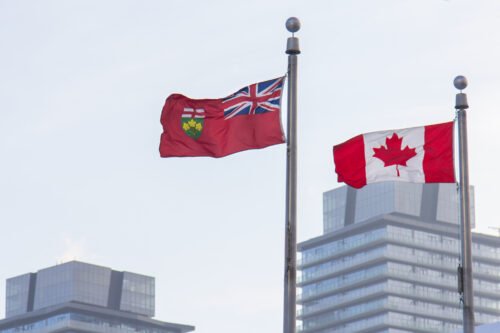
Nuclear Emergency Preparedness in Ontario
OTTAWA (December 8, 2017) – The following is a brief overview of how Ontario’s nuclear power operators manage emergency preparedness and security at the province’s three nuclear power generating stations (Bruce, Darlington, Pickering). Ontario’s nuclear generating stations are designed with multiple safety systems and are staffed by station personnel who are extremely well trained. In the more than four decades that nuclear energy has served Canada’s energy needs, no member of the public has been harmed because of a radiation emission from a nuclear power plant. Canada’s nuclear reactors are among the most robust designs in the world and have layer upon layer of safety systems to prevent damage and protect public safety in the unlikely event of an incident. While the goal is accident prevention, Ontario’s nuclear plants have proven and practised emergency procedures in place. This includes safe shutdown of the reactors and world-class firefighting capability, in the event of an emergency. The Canadian Nuclear Safety Commission (CNSC), which is responsible for regulating nuclear stations in Canada, regularly inspects the facilities and evaluates emergency drills.
Every year, Ontario’s nuclear plants conduct dozens of emergency response drills. In 2016, as a follow-up to 2012’s ‘Huron Challenge,’ Bruce Power and the Office of the Fire Marshal and Emergency Management collaborated to hold ‘Exercise Huron Resolve,’ a five-day, full-scale emergency drill. Huron Resolve brought together almost 500 people from more than 29 agencies, including all levels of government, Bruce Power, and non-governmental organizations. The exercise simulated a major nuclear incident at Bruce Power. This successful event will assist Bruce Power with its mandate of continuously improving its emergency preparedness programs and procedures.
This past December 6 and 7, Ontario Power Generation (OPG) and more than 30 partner organizations participated in a large-scale, emergency preparedness exercise (ExUC) at Pickering Nuclear Generating Station. During these two days, OPG, Region of Durham, City of Toronto, City of Pickering and various other provincial and federal government agencies worked together to simulate a mock nuclear emergency and test their response plans. This simulation exercise ensured that each organization is well prepared to effectively safeguard the health and safety of the public in the highly unlikely event of a nuclear emergency. The CNSC observed the drill and will provide feedback to OPG. Safety is at the core of OPG’s operations. The company routinely leads and participates in emergency preparedness exercises to ensure it is ready to respond to any potential incident. OPG facilities are staffed with highly trained personnel and feature multiple safety barriers.
Nuclear security
Canada’s nuclear plants have extensive security 24 hours a day, 7 days a week including armed response teams. Nuclear security is also regulated by the CNSC and aided by federal regulations that set out detailed security requirements for licensed nuclear facilities. The CNSC approach follows international physical protection best practices and standards recommended by the International Atomic Energy Agency (IAEA). In October 2015, a team of IAEA experts completed a two-week mission to review national nuclear security practices in Canada. The mission reviewed the physical protection systems at the Bruce Power site. It noted that Canada has strong and sustainable nuclear security activities. Security officials at Canada’s nuclear power plants are in constant contact with various authorities related to potential threats or warnings both nationally and internationally.
John Barrett, President and CEO of the Canadian Nuclear Association: “Ontario’s nuclear power generating stations and their operators are world-class in their application of emergency preparedness and security. It is part and parcel of Ontario’s nuclear advantage, which includes providing over 60% of the province’s electricity needs in a safe, secure, affordable and emissions-free way.”
-30-
For more information:
Paul Hebert
Director of Communications
(613) 237-4262
hebertp@cna.ca
Media Contact
Natalie CutlerVice President, Communications & Member Engagement
communications@cna.ca


